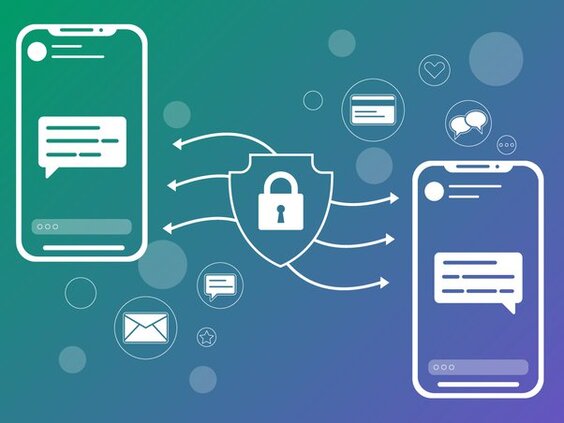

Revenge pornography, also known as non-consensual pornography, is the deliberate distribution of private, sexually explicit images or videos without the consent of the individual depicted. It is often used as a tool to blackmail, humiliate, or punish victims, causing severe emotional and psychological harm. With the rise of digital communication, students are increasingly vulnerable to this crime, making it essential for teachers to recognize the warning signs and educate students about online safety.
Why Should Teachers Be Concerned?
Revenge pornography can severely impact a student’s academic performance, mental health, and future prospects. As educators, understanding this cybercrime allows you to play a crucial role in safeguarding your students.
Consequences of Revenge Pornography:
-
Reputation Damage: Victims may face bullying, social exclusion, and reputational harm, leading to academic and emotional struggles.
-
Mental and Emotional Trauma: The relentless online harassment and exposure can lead to severe stress, anxiety, and depression.
-
Legal and Social Consequences: Victims may feel powerless and afraid to seek help, fearing judgment or retaliation.
Identifying Warning Signs in Students
Being observant of behavioral changes in students can help teachers detect potential victims or those at risk. Some warning signs include:
-
Sudden withdrawal from social activities and reluctance to engage with peers.
-
Unexplained anxiety or distress after using social media or mobile devices.
-
Signs of cyberbullying, such as receiving harassing messages or social media backlash.
-
Unusual behavior in relationships, including pressure to share intimate content.
-
Disinterest in academics, declining grades, or frequent absences.
How Teachers Can Educate and Safeguard Students
1. Promote Digital Awareness
Encourage students to be cautious about sharing personal information and images online. Highlight the permanence of digital content and the risks of trusting online acquaintances with private material.
2. Discuss Consent and Online Boundaries
Teach students about consent and the importance of setting digital boundaries in relationships. Reinforce that sharing intimate content—even with trusted partners—can have unforeseen consequences.
3. Address Peer Pressure and Sextortion
Explain the dangers of peer pressure and the tactics predators use to manipulate victims into sharing explicit content. Make students aware of sextortion cases where perpetrators threaten to release private images unless the victim complies with their demands.
4. Establish a Safe Reporting System
Create an environment where students feel comfortable discussing sensitive topics. Implement anonymous reporting mechanisms where students can report cyber threats without fear of shame or retaliation.
5. Guide Students on Cyber Safety Measures
-
Privacy Settings: Teach students how to enable security settings on social media platforms.
-
Blocking & Reporting: Encourage them to block and report any suspicious or threatening users.
-
Think Before You Share: Reinforce the idea that once something is online, it is nearly impossible to erase.
Immediate Actions if a Student is a Victim
If you suspect or confirm that a student has been affected by revenge pornography, act swiftly:
-
Provide Emotional Support: Assure the student that they are not alone and that help is available.
-
Report to Authorities: Encourage reporting the incident to cybercrime.gov.in or local authorities.
-
Involve Parents & Counselors: Work with guardians and mental health professionals to support the student’s well-being.
-
Assist in Content Removal: Guide them on reporting explicit content to social media platforms and requesting takedown.
Legal Protections Against Revenge Pornography
Educators should be familiar with legal provisions in India to help students take appropriate legal action:
Indian Penal Code (IPC):
-
Section 292: Prohibits the distribution of obscene material.
-
Section 354C: Covers the unauthorized capture or dissemination of private images.
-
Section 499: Addresses actions that harm an individual's reputation.
-
Section 509: Criminalizes acts that insult the modesty of a woman.
Information Technology Act:
-
Section 66E: Covers privacy violations involving sensitive images.
-
Section 67 & 67A: Criminalize the transmission of sexually explicit content.
-
Section 72: Addresses breaches of confidentiality and privacy.
Additional protections include the Indecent Representation of Women (Prohibition) Act, 1986 (IRWA), which prevents the publication of inappropriate images.
Conclusion
Revenge pornography is a serious cybercrime that can have lifelong consequences for students. As educators, your role extends beyond academics—you are mentors, guides, and protectors. By recognizing warning signs, educating students on digital safety, and advocating for legal action when necessary, you can create a safer and more informed school environment.
Empower your students with knowledge and help them navigate the digital world responsibly.
Cyber Hygiene Foundation
- TeachersOnlineSafety CyberAwareEducators DigitalSafetyForTeachers EdTechSecurity TeacherCyberSafety CyberAwareness CyberSafety SafeInternetForAll CyberHygieneForAll
You May Also Like It
The internet has transformed the way children learn, play, and
Instant messaging (IM) platforms have become indispensable for communication in
Leave A Comment
Don’t worry ! your e-mail address will not published.








0 Comments